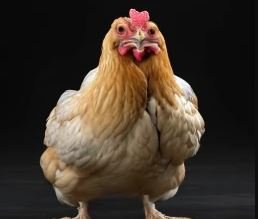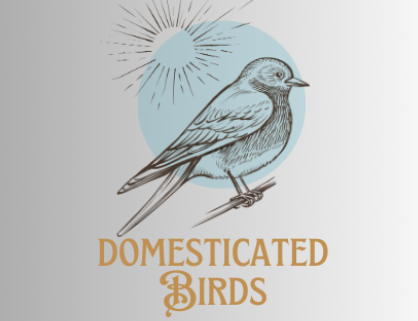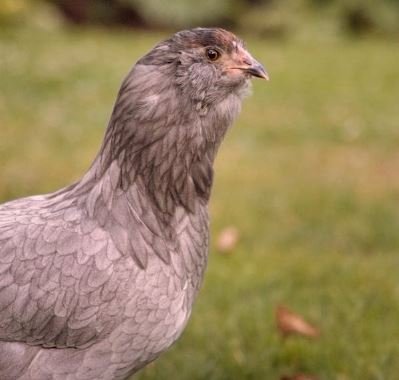Know Wheaten Ameraucana Chicken’s History, types, appearance, traits, Egg production, Ameraucana vs blue Ameraucana, Benefits, price, Owner’s suitability, disadvantages, and many more.
Introduction
Transform your coop with the Wheaten Ameraucana. Their appealing plumage and the pretty blue eggs they produce will captivate any poultry lover. This article will cover almost everything about wheaten Ameraucana chicken.
History of Wheaten Ameraucana Chicken
The Ameraucana chicken breed has a rich history that dates back to the 1970s in the United States. Developed from the Araucana chicken, the Ameraucana was bred to retain the blue egg-laying trait while eliminating the genetic issues associated with the Araucana, such as tufts and rumplessness.
Types of Wheaten Ameraucana Chicken
Standard Wheaten Ameraucana: These chickens have a classic wheat-colored body with a lighter underbelly in hens and richer, more vibrant feathering in roosters. They’re known for their friendly nature and striking looks.
Blue Wheaten Ameraucana: This variety features a blend of the traditional wheaten coloring with beautiful blue-gray feathers, making them stand out in any flock. They are just as friendly and productive as the standard Wheaten Ameraucana.
Splash Wheaten Ameraucana: These birds have a unique mix of white and wheaten feathers with blue splashes. They’re rare and add a lot of visual interest to your flock, while also being friendly and good egg layers.
Wheaten Ameraucana Chicken Appearance
Wheaten Ameraucana chickens are medium-sized birds with a full, rounded body. They have a distinct beard and muffs that give their face a unique, puffy appearance. Their tail is carried upright, adding to their proud stance.
Wheaten Ameraucana Chicken Colors
Feathers
Hens are primarily a light wheat color with darker feathers on their neck and back. Roosters are more colorful, showcasing striking patterns of blue, black, and wheaten tones.
Beak
The beak of a Wheaten Ameraucana is typically horn-colored, blending well with their overall appearance.
Legs and Feet
Their legs and feet are slate blue, a characteristic trait of the Ameraucana breed. This unique coloration sets them apart from many other chicken breeds.
Comb and Wattles
Wheaten Ameraucana chickens have a pea comb, which is small and close to the head. This type of comb is advantageous in colder climates as it reduces the risk of frostbite. They have minimal wattles, which are also small, reducing vulnerability to cold weather.
Wheaten Ameraucana Size and Weight
An average Wheaten Ameraucana rooster weighs about 6.5 pounds (2.9 kg), while hens weigh around 5.5 pounds (2.5 kg). Their moderate size makes them manageable and easy to handle, even for beginners.

Wheaten Ameraucana Chicken Characteristics
Egg Color
Wheaten Ameraucana chickens lay blue eggs, which can range from a light pastel blue to a deeper, vibrant blue.
Beard and Muffs
They have distinctive facial features, including a beard and muffs, giving their face a fluffy, full appearance.
Temperament
These chickens are known for their friendly and calm demeanor, making them easy to handle.
Cold Hardiness
Their pea comb and minimal wattles reduce the risk of frostbite, making them well-suited for colder climates.
Moderate Broodiness
Some hens may go broody occasionally, which can be beneficial if you’re interested in hatching chicks.
Foraging Ability
Wheaten Ameraucanas are excellent foragers and can find a significant portion of their diet by foraging.
Unique Appearance
They have slate blue legs and feet, a horn-colored beak, and a well-proportioned body, making them visually distinctive.
Adaptability
These chickens adapt well to various environments, thriving in both confined spaces and free-range settings.
Friendly Nature
Wheaten Ameraucanas are sociable and get along well with other chickens, making them easy to integrate into mixed flocks.
Wheaten Ameraucana Rooster vs Hen
Physical Differences
Roosters are like the showstoppers of the flock, boasting vibrant hues of blue, black, and wheaten feathers that catch the eye. In contrast, hens rock a more understated wheat color, blending in with their surroundings. You can spot roosters by their longer tail feathers and the more prominent comb and wattles on their heads.
Behavioral Differences
Roosters strut around with an air of protectiveness, keeping a keen eye out for any potential threats to their ladies. They’re the guardians of the flock, ready to defend their territory with gusto. On the other hand, hens are the calm and collected members, focusing on foraging for treats and diligently laying eggs for the coop.
Rooster Importance in a Flock
Think of the rooster as the vigilant watchman of the flock, always on the lookout for danger. With their loud crowing and watchful nature, they deter predators and provide a sense of security for the hens. They play a crucial role in maintaining order and protecting the flock’s well-being.
Wheaten Ameraucana Chicken Eggs
Wheaten Ameraucana Chicken Egg Colors
Imagine reaching into your nest box and finding a collection of stunning blue eggs from your Wheaten Ameraucana hens. These eggs aren’t just blue; they come in a range of hues.

Wheaten Ameraucana Chicken Egg Production per Year
When it comes to egg production, Wheaten Ameraucana hens are steady performers, laying an average of 180-200 eggs per year. Whether you’re running a small homestead or a larger farm, this moderate production rate ensures a reliable supply of fresh eggs for your family or customers.
10 prolific egg-laying chickens.
Egg Nutritional Value
But it’s not just about looks and quantity; These beautiful blue eggs are not only a feast for the eyes but also a powerhouse of protein, vitamins, and minerals. They’re a wholesome addition to your diet, providing essential nutrients to keep you healthy and satisfied.
Wheaten Ameraucana vs Blue Wheaten Ameraucana
Let’s compare these two captivating varieties: the Wheaten Ameraucana and the Blue Wheaten Ameraucana.
Appearance Comparison
Both of these beauties share the same classic body shape and size, but here’s where they diverge: the Blue Wheaten Ameraucana boasts a striking blue-gray feather pattern that sets it apart from its Wheaten counterpart. Picture a stunning blend of blue and wheat tones adorning these birds, making them stand out in any flock.
Egg Production Comparison
When it comes to egg production, both varieties are equally impressive. Expect around 180-200 eggs per year from both Wheaten and Blue Wheaten Ameraucanas. So, while their appearances may differ, their laying capabilities are on par. It’s all about choosing the aesthetic that speaks to you, as both varieties deliver when it comes to egg production.

Wheaten Ameraucana Chicken Benefits
Unique Appearance
Adding Wheaten Ameraucana chickens to your flock brings a touch of beauty and charm with their stunning feather patterns and distinctive blue eggs. Not only do they stand out visually, but they also make for delightful conversation starters among visitors and neighbors, potentially increasing the value of your poultry flock if you decide to sell them.
Colorful Blue Eggs
One of the most charming aspects of raising Wheaten Ameraucanas is the beautiful blue eggs they lay. These colorful eggs not only brighten up your egg basket but can also fetch a premium price at farmers’ markets or specialty stores, offering a potential source of additional income.
Friendly Disposition
Wheaten Ameraucana chickens are known for their docile and friendly nature, making them a joy to interact with and easy to handle, especially for families with children. Their sociable behavior adds a sense of warmth and companionship to your backyard or farm, potentially attracting customers if you offer farm tours or educational programs.
Low Feed Costs
Due to their excellent foraging abilities, Wheaten Ameraucana chickens can supplement their diet by scavenging for insects, weeds, and other natural foods. This can help reduce feed costs, saving you money on poultry feed over time, and contributing to your overall financial savings.
Complete chicken’s diet in summer and winter.
Egg Production
With an average of 180-200 eggs per year, Wheaten Ameraucana hens are reliable layers, providing a steady supply of nutritious eggs for your family. By producing your own eggs, you can save on grocery expenses and even potentially generate extra income by selling surplus eggs to friends, family, or local markets.
Health Benefits
Wheaten Ameraucana eggs are not only visually appealing but also packed with essential nutrients like protein, vitamins, and minerals. By consuming homegrown eggs from your flock, you can enjoy the health benefits of fresh, organic produce while also saving on the cost of purchasing similar products from supermarkets or specialty stores.
Wheaten Ameraucana Disadvantages
Predator Attraction
The vibrant colors and distinctive appearance of Wheaten Ameraucana chickens might potentially make them more visible to predators, leading to a slightly higher risk of predation compared to chickens with more subdued plumage.
Cost of Purchase
While Wheaten Ameraucana chickens are generally affordable, some breeders may charge higher prices due to their popularity and specialty status. However, this disadvantage can vary depending on the availability of breeders in your area.
Selective Breeding Challenges
Maintaining consistent feather colors and eggshell hues in Wheaten Ameraucana chickens through selective breeding can pose challenges. Ensuring desired traits in offspring may require careful breeding practices and selection over multiple generations.
Limited Availability
Finding reputable breeders or suppliers of Wheaten Ameraucana chickens may be challenging, especially in certain geographical regions. Limited availability could result in longer wait times or increased transportation costs when acquiring birds for your flock.
Susceptibility to Cold
While Wheaten Ameraucana chickens have some cold-hardy traits, such as pea combs and minimal wattles, they may still be more susceptible to extreme cold temperatures compared to breeds with larger combs and wattles. Providing adequate shelter and protection during winter months is essential to mitigate this risk.
Potential for Egg Color Variability
While Wheaten Ameraucana chickens typically lay blue eggs, the exact shade and consistency of egg color can vary among individual birds and may change over time. This variability may be undesirable for poultry keepers seeking uniformity in egg appearance for market or exhibition purposes
Owner’s Suitability
Suitable Owners
If you’re someone who values having unique and visually striking birds in your flock, Wheaten Ameraucana chickens could be the perfect fit for you. Despite their higher initial cost, these charming chickens are well-suited for both beginners and seasoned chicken keepers alike. Their friendly and interactive nature adds a delightful touch to any backyard or farm setting.
Unsuitable Owners
While Wheaten Ameraucanas offer many benefits, they may not be the best choice for everyone. If you’re solely focused on high egg production or have a tight budget, these chickens might not meet your needs. Their initial cost, along with occasional broodiness, could pose challenges for those seeking maximum efficiency or cost-effectiveness in their poultry endeavors.
Wheaten Ameraucana Price
Initial Price
Expect to pay $10 to $20 for a chick, while pullets and mature birds can cost $25 to $50 each.
Ongoing Expenses
Budget $10 to $15 per month per bird for feed, healthcare, and coop maintenance, excluding vet bills.
Conclusion
In summary, consider welcoming Wheaten Ameraucana chickens into your flock for a delightful blend of beauty, charm, and practicality. With their striking appearance, colorful blue eggs, and friendly nature, they’re sure to bring joy to your poultry-keeping experience. Despite initial costs and ongoing expenses, the rewards of raising these captivating birds far outweigh the investment. So why not add a touch of color and companionship to your coop with Wheaten Ameraucanas?
Where to find Wheaten Ameraucana chicken for sale?
You can find Wheaten Ameraucana chickens from reputable breeders, hatcheries, and online poultry suppliers.
What are the benefits of owning Wheaten Ameraucana chicken?
The benefits include their unique appearance, colorful blue eggs, friendly temperament, and adaptability to various climates.
How many eggs Wheaten Ameraucana chicken lay per year?
Wheaten Ameraucana hens typically lay between 180 and 200 eggs per year.
What color do Wheaten Ameraucana lay eggs?
Wheaten Ameraucana chickens lay blue eggs, which can vary from a pale to a vibrant blue.
How long do Ameraucanas live?
With proper care, Ameraucana chickens can live between 7 to 10 years.
Do Wheaten Ameraucana chickens lay eggs in both summer and winter?
Yes, Wheaten Ameraucana chickens can lay eggs year-round, although their production might slow down during the shorter days of winter.

